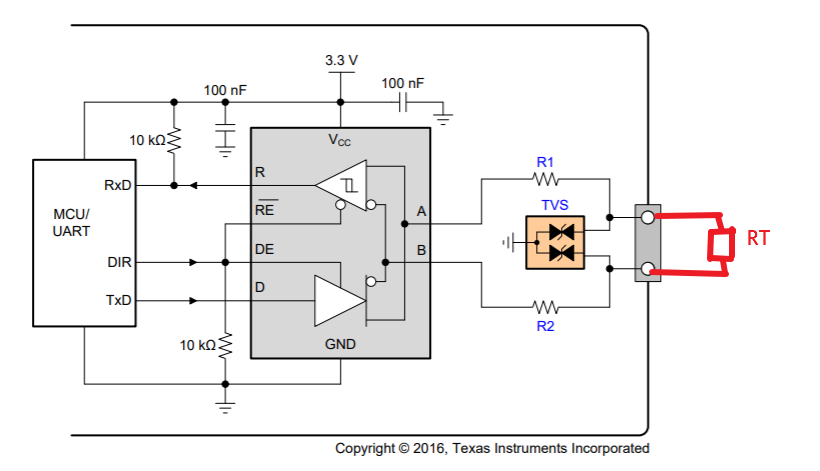Other Parts Discussed in Thread: THVD2450, SN65HVD1782,
Dear team,
1. What is the parasitic capacitance requirement for TVS devices when RS485 is operating at 10MHz? Less than 10pF? 20pF?
2. What are the function of R1 and R2? Could they be replaced by a choke? Which one is recommended? Do I need to add a 120 ohm terminal resistor between A and B as below?
Thanks & Best Regards,
Sherry


